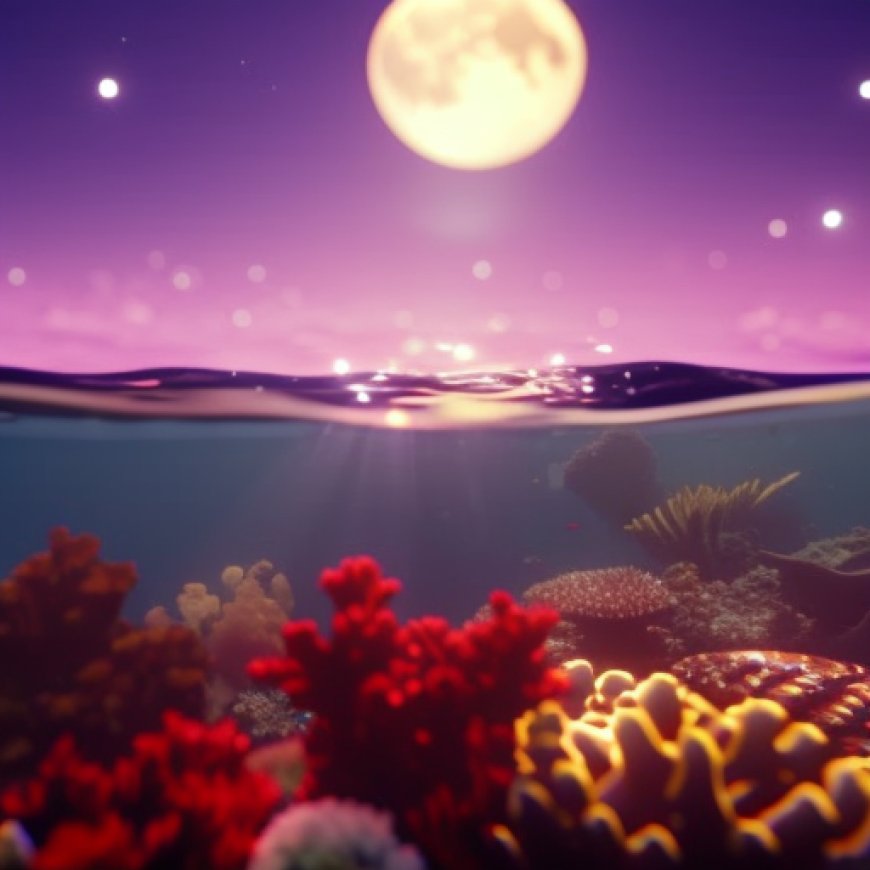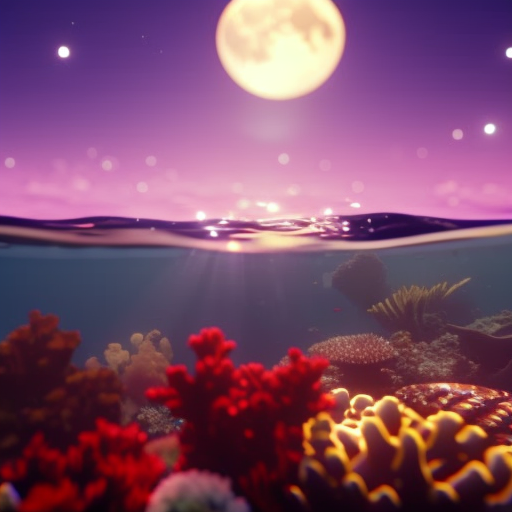Moonlit Nights Change a Coral Reef’s Tune – Eos
Moonlit Nights Change a Coral Reef's Tune Eos


Reef Soundscapes: A Key Indicator of Ecosystem Health
Introduction
A thriving coral reef is a noisy place, just like a bustling city. Fish call out to each other, crabs clatter along, and snapping shrimp fire their oversized bubble-popping pincer to stun prey.
In a recent study published in PLoS One, oceanographer Lauren Freeman and her colleagues from the Naval Undersea Warfare Center listened in on three flourishing coral reefs in Hawaii over the course of a year. They uncovered a dramatic change in reef noise that unfolds as the Moon rises and sets. This research is crucial for understanding what a healthy reef sounds like and improving our chances of protecting them, aligning with Sustainable Development Goal 14: Life Below Water.
Reef Rhythms
A flourishing reef has the rich and vibrant timbre of a full orchestra, but degraded reefs sound as drab as they look. Struggling reefs have reduced biodiversity and animal activity, resulting in a subdued and monotone soundscape. The high-pitched bubbling of algae that overgrow ailing reefs replaces the deep tonal fish calls and the loud crackle of snapping shrimp, which are hallmarks of a healthy reef.
The reef soundscape serves as a key indicator of ecosystem health, especially considering the global endangerment of reefs due to overfishing, pollution, and climate change. Acoustic monitoring has proven to be more effective than visual surveys in assessing biodiversity, particularly since it can be conducted at night when many reef inhabitants are most active. Additionally, acoustic monitoring is nonintrusive, capturing ambient noise from a roughly 100-meter radius using an acoustic sensor placed on the seafloor.
Moonlight Cues
Freeman and her colleagues have been conducting long-term acoustic monitoring on Hawaiian reefs, capturing soundscapes around the clock and throughout seasonal cycles. Their familiarity with background noise from weather, tides, and boat traffic allowed them to distinguish finer-scale moonlight-driven rhythms.
The researchers found that the rising and setting of the Moon are major prompts for the reef ecosystem. The reefs they studied are in areas where the tides are not synchronized with the rising and setting Moon, ensuring that any changes in animal activity at these times aren’t related to water currents.
Their recordings revealed hundreds of fish calls and thousands of invertebrate noises per minute. Different groups of animals vocalized in three distinct frequency bands, and each group responded to moonlight differently. High-pitched fish calls were louder and more numerous when the Moon rose, while fish calls with more bass and high-pitched invertebrate noises grew quieter as the Moon rose.
Better Baselines
The researchers are still working to fully explain this moonlight-driven behavior. They hypothesize that certain fish might be more willing to snack and forage on brighter nights, causing the invertebrates they feed on to hide quietly. Identifying the species involved will allow them to establish feeding relationships between herbivores and predators.
Understanding daily moonlight-controlled rhythms as a characteristic of a healthy reef can aid monitoring efforts and provide a baseline for measuring ecosystem change and guiding restoration initiatives. Acoustic monitoring has also been used to attract fish and coral larvae back to barren reefs by playing healthy reef soundscapes through underwater speakers.
Reef monitoring and restoration efforts that utilize acoustics should consider daily variations in their design. The time at which recordings are captured could affect interpretations of biodiversity and determine the type of coral and fish larvae recruited to ailing reefs.
This research highlights the importance of exploring the fundamentals of how reef ecosystems function and aligns with Sustainable Development Goal 14: Life Below Water. By understanding the intricate relationships and behaviors within coral reefs, we can better protect and restore these vital marine ecosystems.
Citation: Martin-Jones, E. (2024), Moonlit nights change a coral reef’s tune, Eos, 105, https://doi.org/10.1029/2024EO240168. Published on 16 April 2024.
SDGs, Targets, and Indicators
1. Which SDGs are addressed or connected to the issues highlighted in the article?
- SDG 14: Life Below Water
- SDG 15: Life on Land
The article discusses the importance of monitoring and protecting coral reefs, which are vital ecosystems that support marine life (SDG 14). It also emphasizes the need to understand how reef ecosystems function and establish baselines for measuring ecosystem change (SDG 15).
2. What specific targets under those SDGs can be identified based on the article’s content?
- SDG 14.2: By 2020, sustainably manage and protect marine and coastal ecosystems to avoid significant adverse impacts, including by strengthening their resilience, and take action for their restoration in order to achieve healthy and productive oceans.
- SDG 15.5: Take urgent and significant action to reduce the degradation of natural habitats, halt the loss of biodiversity, and protect and prevent the extinction of threatened species.
The article highlights the importance of monitoring and protecting coral reefs to avoid significant adverse impacts and restore their health and productivity (SDG 14.2). It also emphasizes the need to understand reef ecosystems to prevent the degradation of natural habitats and protect threatened species (SDG 15.5).
3. Are there any indicators mentioned or implied in the article that can be used to measure progress towards the identified targets?
- Acoustic monitoring of reef soundscapes
- Changes in animal activity levels
- Identification of species calling and their feeding relationships
The article suggests that acoustic monitoring of reef soundscapes can be an effective indicator of ecosystem health and changes in animal activity levels over time. Additionally, identifying the species calling and establishing their feeding relationships can provide insights into the functioning of reef ecosystems.
SDGs, Targets, and Indicators Table
| SDGs | Targets | Indicators |
|---|---|---|
| SDG 14: Life Below Water | 14.2: By 2020, sustainably manage and protect marine and coastal ecosystems to avoid significant adverse impacts, including by strengthening their resilience, and take action for their restoration in order to achieve healthy and productive oceans. | – Acoustic monitoring of reef soundscapes – Changes in animal activity levels |
| SDG 15: Life on Land | 15.5: Take urgent and significant action to reduce the degradation of natural habitats, halt the loss of biodiversity, and protect and prevent the extinction of threatened species. | – Acoustic monitoring of reef soundscapes – Changes in animal activity levels – Identification of species calling and their feeding relationships |
Behold! This splendid article springs forth from the wellspring of knowledge, shaped by a wondrous proprietary AI technology that delved into a vast ocean of data, illuminating the path towards the Sustainable Development Goals. Remember that all rights are reserved by SDG Investors LLC, empowering us to champion progress together.
Source: eos.org

Join us, as fellow seekers of change, on a transformative journey at https://sdgtalks.ai/welcome, where you can become a member and actively contribute to shaping a brighter future.







